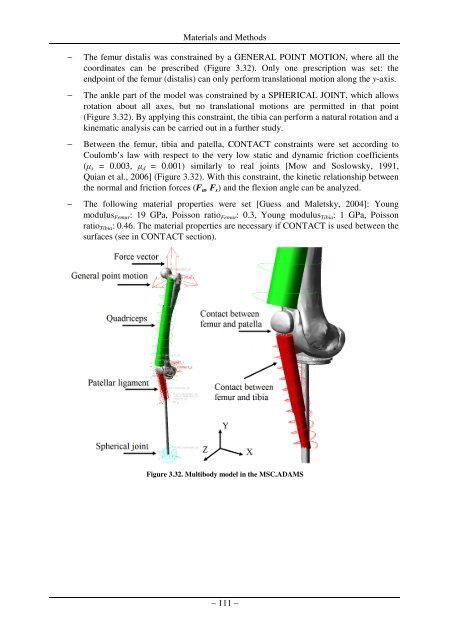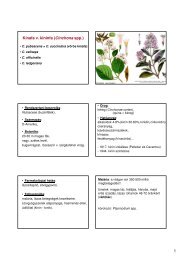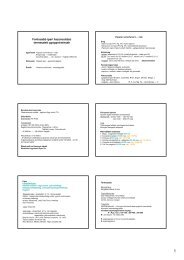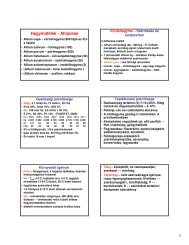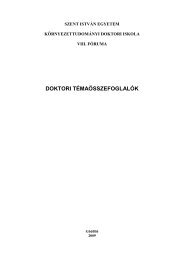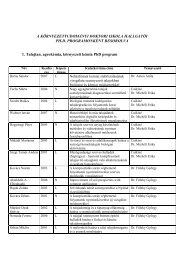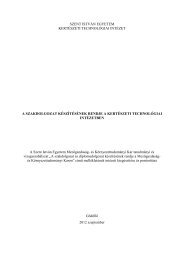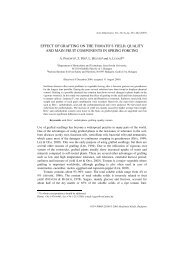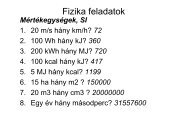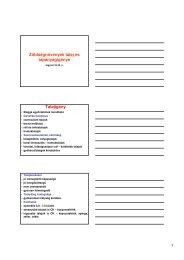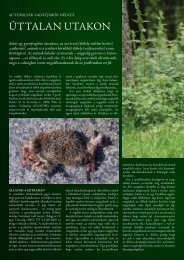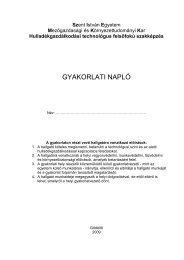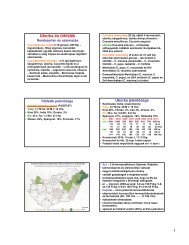PhD Fekete - SZIE version - 2.2 - Szent István Egyetem
PhD Fekete - SZIE version - 2.2 - Szent István Egyetem
PhD Fekete - SZIE version - 2.2 - Szent István Egyetem
You also want an ePaper? Increase the reach of your titles
YUMPU automatically turns print PDFs into web optimized ePapers that Google loves.
Materials and Methods<br />
−<br />
−<br />
−<br />
−<br />
The femur distalis was constrained by a GENERAL POINT MOTION, where all the<br />
coordinates can be prescribed (Figure 3.32). Only one prescription was set: the<br />
endpoint of the femur (distalis) can only perform translational motion along the y-axis.<br />
The ankle part of the model was constrained by a SPHERICAL JOINT, which allows<br />
rotation about all axes, but no translational motions are permitted in that point<br />
(Figure 3.32). By applying this constraint, the tibia can perform a natural rotation and a<br />
kinematic analysis can be carried out in a further study.<br />
Between the femur, tibia and patella, CONTACT constraints were set according to<br />
Coulomb’s law with respect to the very low static and dynamic friction coefficients<br />
(µ s = 0.003, µ d = 0.001) similarly to real joints [Mow and Soslowsky, 1991,<br />
Quian et al., 2006] (Figure 3.32). With this constraint, the kinetic relationship between<br />
the normal and friction forces (F n , F s ) and the flexion angle can be analyzed.<br />
The following material properties were set [Guess and Maletsky, 2004]: Young<br />
modulus Femur : 19 GPa, Poisson ratio Femur : 0.3, Young modulus Tibia : 1 GPa, Poisson<br />
ratio Tibia : 0.46. The material properties are necessary if CONTACT is used between the<br />
surfaces (see in CONTACT section).<br />
Figure 3.32. Multibody model in the MSC.ADAMS<br />
– 111 –


